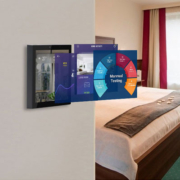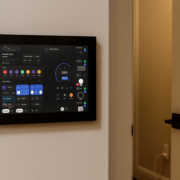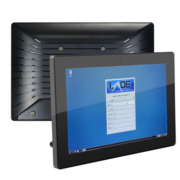How does the Brilliant Plug-In Smart Home Control panel compare to using an iPad or similar device to control smart home devices?
In the rapidly evolving smart home landscape, users often face a critical choice: should they invest in a dedicated device like the Brilliant plug-and-play smart home control panel, or simply use a tablet like an iPad to manage their smart home? At first glance, an iPad may seem more cost-effective and flexible, but in reality, the two options differ significantly in functionality, reliability, and user experience. This article provides an in-depth comparison of the Brilliant control panel and the iPad (or similar devices) for smart home management.
1. Purpose-Built vs. General-Purpose Device
The Brilliant plug-and-play smart home control panel is designed specifically for home automation. It natively supports lighting, climate, security, entertainment, and other systems, and is permanently wall-mounted for constant, on-demand access.
In contrast, the iPad is a general-purpose device that can control smart home devices via apps like Apple Home, Google Home, or third-party solutions. While more versatile, the iPad is not designed for fixed installation—it can be moved, run out of battery, or go missing, making it a less reliable primary control interface.
2. Continuous Power & Instant Access
A key advantage of the Brilliant control panel is its always-on, hardwired power supply. Users never need to wake the device, unlock it, or worry about battery drain—any family member can operate it effortlessly at any time.
The iPad, however, relies on battery power. Even when plugged in, it often requires waking the screen, entering a passcode, or using biometric authentication before accessing control apps. Over time, these seemingly minor inconveniences can degrade the user experience.
3. User Interface & Interaction
Brilliant’s interface is designed for household use, offering intuitive touch, voice, and gesture controls. It also integrates deeply with major platforms like Alexa, Google Assistant, Ring, and Sonos, ensuring seamless compatibility.
On the iPad, the experience depends on app design quality. Switching between different apps to control lights, cameras, and thermostats can be cumbersome unless the user invests significant time in customization.
4. Deep Integration with Home Infrastructure
Beyond controlling smart devices, the Brilliant panel integrates directly with a home’s electrical system, replacing traditional switches to manage hardwired lights, fans, built-in speakers, and more. It also supports intercom functionality between multiple panels.
The iPad, as a portable device, cannot easily achieve this level of integration. Controlling built-in systems typically requires additional hardware and complex setups.
5. Aesthetics & Property Value
A professional smart panel like Brilliant enhances a home’s aesthetics and market appeal. Its built-in design lends a modern, sophisticated look that can attract future buyers.
Even with a wall mount, an iPad appears more like a DIY solution, lacking the polished, integrated feel of a dedicated control panel.
6. Security Considerations
As a single-purpose device, Brilliant minimizes security risks associated with web browsing or third-party apps. It also supports guest access modes, allowing visitors limited control without compromising network security.
The iPad, being multi-functional, poses greater security risks if not properly managed.
7. Cost Comparison
At first glance, the iPad may seem cheaper, especially if repurposing an existing device. However, factoring in mounts, docks, app subscriptions, and setup time, the total cost difference narrows.
Brilliant’s plug-and-play panel, with its out-of-the-box integration and long-term reliability, offers competitive pricing for its value.
Which Should You Choose?
The best choice depends on user priorities. For those seeking a professional, always-available, and future-proof smart home system that enhances property value, the Brilliant control panel is the superior option.
If flexibility and portability are paramount, and you’re willing to invest time in setup and maintenance, an iPad can work. However, for most users who prioritize seamless, intuitive, and long-term smart home control panel, Brilliant delivers a far more refined solution.
For those seeking even more advanced and customizable options, Portworld offers excellent alternatives. Its 4-inch and 5-inch smart control panels, powered by Android and supporting multi-protocol communication, are ideal for residential and commercial applications, providing flexible and scalable professional solutions.










